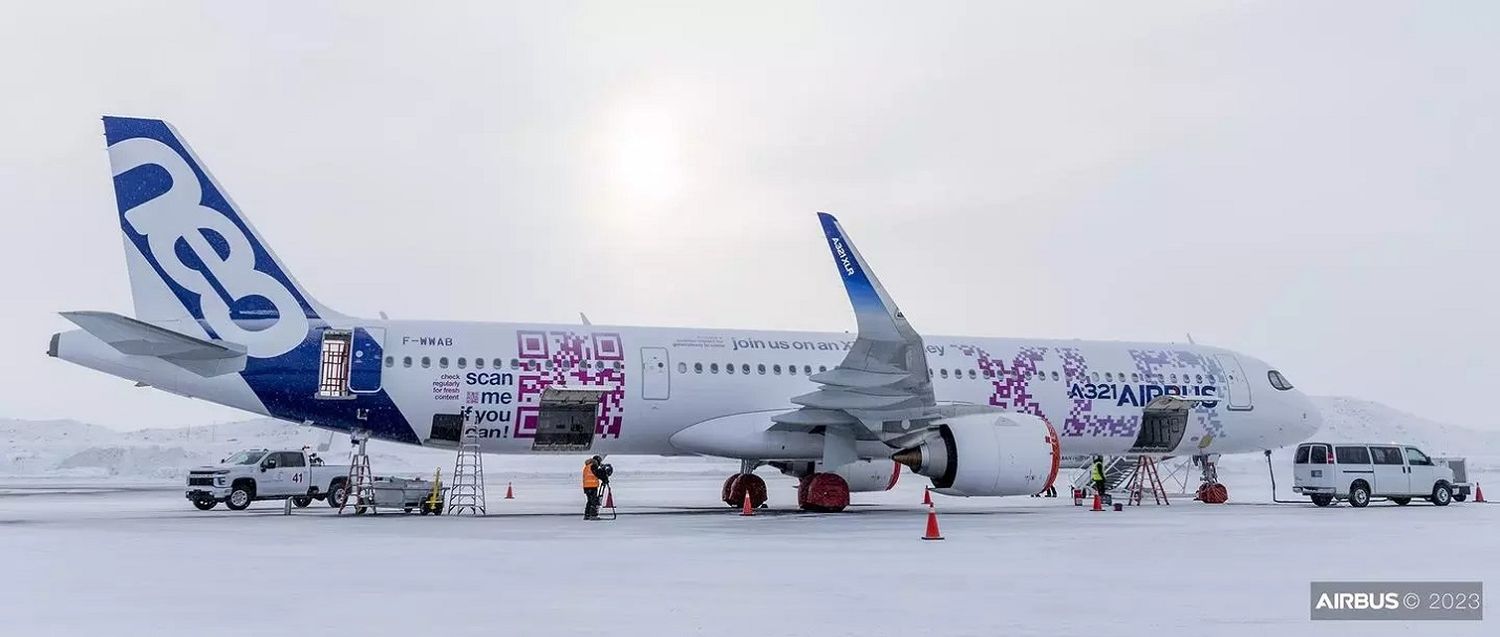Airbus A321XLR completes second stage of extreme cold-weather testing in Canada
The Airbus A321XLR completed this week the second testing campaign under extreme cold conditions in Iqaluit, capital of the Canadian territory of Nuvanut.
In 2006, Iqaluit Airport became the first one in the Americas to host the Airbus A380, also testing in this type of environment, one of the most challenging an aircraft can face. Since then, the authorities have promoted it as an ideal aerodrome for this purpose, due to its climatic conditions, low traffic and low airport charges.
Weeks earlier, another A321XLR had made a visit to the Canadian Arctic Archipelago city for the first stage of testing. On that occasion, Airbus tested hydraulic and other systems performance in temperatures approaching minus 40 degrees Celsius.
See also: Airbus may delay A321XLR deliveries to 2025
Extreme cold-weather testing for the Airbus A321XLR
In this second test campaign, the European manufacturer evaluated the cabin water and waste system. For this purpose, it sent the aircraft with manufacturer’s serial number (MSN) 11080.
«This time around we tested the cabin water and waste system, which required the temperatures inside the unheated cabin to ‘soak’ at below -15 degrees Centigrade overnight» explained Tuan Do, Lead Flight Test Engineer.
The manufacturer conducted successive ground service evaluations over four days. In each case, different heating and insulation configurations were applied for subsequent comparative analysis.

For the first time, the new «cold weather option» available for the A321XLR, which adds insulation and heater alternatives, was tested in real conditions. However, performance was also analysed with a standard configuration. In addition, the operation of the ground de-icing and heating equipment was demonstrated.
Airbus sent a team of more than thirty people to Iqaluit. These included pilots, flight test engineers, a cabin engineer, mechanical and electrical specialists, quality inspectors, instrumentation specialists, system design specialists, technical photographers and an operations clerk to oversee logistics throughout the trip.
Extremely low temperatures pose a challenge to the aircraft’s hydraulic systems and fluids. For this reason, this type of testing is part of the certification process for new models prior to entry into service.
The A321XLR
The Airbus A321XLR is the European manufacturer’s latest long-range single-aisle development. Its range will allow it to cover distances of up to 4.700 nautical miles (8.700 kilometres) with up to 30% less fuel consumption than previous generation aircraft. To achieve this range, Airbus developed a larger central fuel tank integrated into the fuselage.
The programme has already suffered delays: the first airplanes were initially planned to be delivered in 2023, but regulatory assessments forced a postponement to mid-2024. However, future customers fear that it could be postponed again and that the first deliveries may not take place until the end of 2024 or 2025.


Comentarios
Para comentar, debés estar registrado
Por favor, iniciá sesión